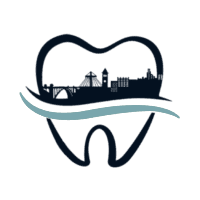Read More:
Dental care remains a vital part of the healthcare industry, as it handles diseases and conditions of the mouth that can contribute to various health concerns later on in life. For those in rural communities, gaining access to oral care remains problematic, as the economic factors within the medical industry require many practitioners to focus their efforts on urban and suburban communities to uphold income. Even though it is a medically needed service, many families in rural areas often experience more dental problems left untreated due to the environmental factors surrounding them. This lack of access to treatment has ultimately led to a new innovation in healthcare that can potentially resolve this issue – teledentistry.
How Teledentistry Can Help Advance Treatment:
For low-income communities, teledentistry can help ease the gap between the patient and the dentist by transforming it through a digital medium. Teledentistry focuses on using virtual methods of communications such as videos, emails, phone calls, and texting rather than in-person visits. Teledentistry has risen over the last few years as a new and exceedingly powerful new concept in the healthcare industry, and with the rise of the Covid-19 pandemic, teledentistry has played a large role in prompting emergency responses for those experiencing severe tooth pain or other tooth conditions, thus decreasing the number of outbreaks over the course of the last few years.
So, how has this new concept revolutionized the way dental care is provided? Teledentistry works to eliminate the need for travel and the extra expenses involved with dental visits. While limited in its ability to be applied in treatments, it can be used as a preliminary step for dentists to provide steps for the patient and establish better treatment plans over time. By acting as a preliminary step, it can help in various situations, including:
• Assisting in Diagnosis and Testing: Through digital mediums, dentists can use radiographs, x-rays, photographs, and other sources of data to form a diagnosis for the patient’s condition.
• Immediate Emergency Care: For many dentists, patients experiencing situations with severe tooth pain and various dental problems can be immediately treated through teledentistry with medication prescriptions, at-home care techniques, and scheduling appointments within an immediate time frame.
• Supplements Teaching Methods: For those studying to become dentists and specialists, teledentistry also provides the opportunity to teach and help advance careers.
• Temporary Fixes To Dental Problems: Teledentistry can be used in many ways to resolve mild problems faced with dental health, including conditions such as dry mouth, gingivitis, and loose brackets from braces.
• Reducing Malocclusion in Children: For parents with children, teledentistry can be a place where parents and their pediatric dentists can work together to create preventative measures and treatment plans for their children, such as providing insight into at-home care.
All of these benefits can provide extensive insight into the impact rural communities often face when needing healthcare. Through teledentistry, dentists can find ways to provide a connection point between their practice and their patients and can help reduce the risk of disease spread and provide medical care for families. Because of its positive impact thus far, teledentistry will hopefully continue to expand and grow within the healthcare community.



